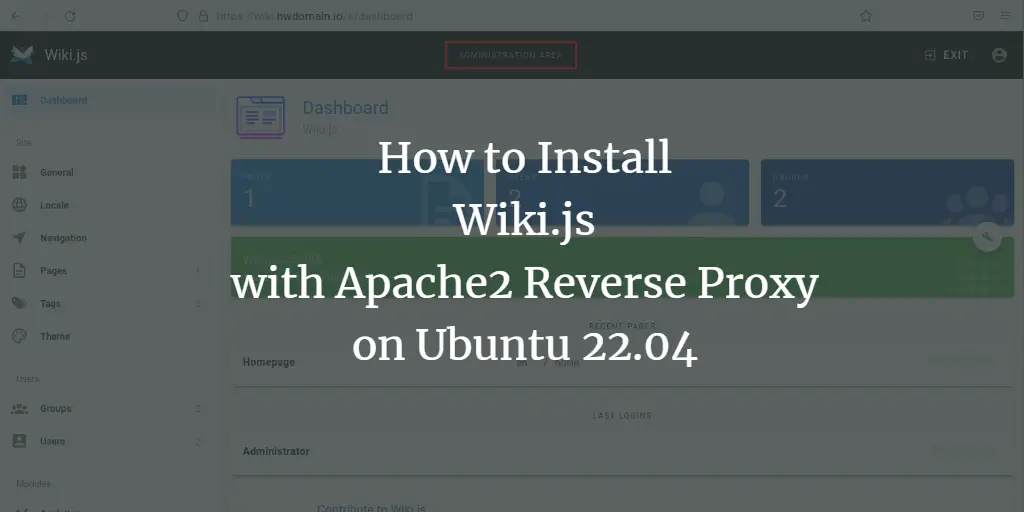This short guide will walk you through the installation of Redmine on Ubuntu 20.04 LTS. Redmine is a free and open source project management tool with a web-based administration dashboard where users can manage projects. Redmine is built on Ruby on Rails framework. With Redmine you can track time on projects, documentation, and write wiki pages for your project. Its RBAC ensures there is a structured access structure.
Features of Redmine Project management tool includes:
- Multiple projects support
- Flexible role based access control
- Flexible issue tracking system
- Gantt chart and calendar
- News, documents & files management
- Feeds & email notifications
- Per project wiki
- Per project forums
- Time tracking
- Custom fields for issues, time-entries, projects and users
- SCM integration (SVN, CVS, Git, Mercurial and Bazaar)
- Issue creation via email
- Multiple LDAP authentication support
- User self-registration support
- Multilanguage support
- Multiple databases support
After the installation of Redmine on Ubuntu 20.04, you can add this features as you see fit.
Setup Pre-requisites
You need to have a running server with Ubuntu 20.04 Linux and additionally:
- SSH user with sudo privileges – root user is also okay
- Domain for hosting Redmine – e.g projects.example.com
- SSL certificate if planning on having it securely – You can use Let’s Encrypt if the server is exposed to the internet with a public IP Address.
Step 1: Connect to server and update
SSH to your server:
$ ssh [email protected]Begin to update it for latest packages to be updated in the server.
sudo apt update
sudo apt upgrade
sudo rebootStep 2: Install MariaDB Database Server
After the update, install and configure MariaDB database server on Ubuntu 20.04 | Ubuntu 18.04.
sudo apt update
sudo apt install mariadb-serverConfirm it is working:
$ sudo mysql -u root
Enter password:
Welcome to the MariaDB monitor. Commands end with ; or g.
Your MariaDB connection id is 57
Server version: 10.3.22-MariaDB-1ubuntu1 Ubuntu 20.04
Copyright (c) 2000, 2018, Oracle, MariaDB Corporation Ab and others.
Type 'help;' or 'h' for help. Type 'c' to clear the current input statement.
MariaDB [(none)]> Step 3: Create Database for Redmine
With database server installed on Ubuntu, let’s create database and user for Redmine project management platform.
$ sudo mysql -u root -p
CREATE DATABASE redmine CHARACTER SET utf8mb4;
GRANT ALL PRIVILEGES ON redmine.* TO 'redmine'@'localhost' IDENTIFIED BY '[email protected]';
FLUSH PRIVILEGES;
EXIT;Confirm redmine database user can login to MySQL Shell with configured password.
$ mysql -u redmine -p
Enter password:
Welcome to the MariaDB monitor. Commands end with ; or g.
Your MariaDB connection id is 59
Server version: 10.3.22-MariaDB-1ubuntu1 Ubuntu 20.04
Copyright (c) 2000, 2018, Oracle, MariaDB Corporation Ab and others.
Type 'help;' or 'h' for help. Type 'c' to clear the current input statement.
MariaDB [(none)]> SHOW DATABASES;
--------------------
| Database |
--------------------
| information_schema |
| redmine |
--------------------
2 rows in set (0.000 sec)
MariaDB [(none)]> QUIT
Bye
Step 4: Install Apache, Ruby and Passenger
We will install Passenger application server that will be used by Ruby and integration to Apache for serving Redmine on Ubuntu
sudo apt install apache2 libapache2-mod-passengerStep 5: Install Redmine on Ubuntu 20.04
Run the commands below to install Redmine on Ubuntu 20.04 Linux.
sudo apt install redmine redmine-mysqlWhen asked to configure Database, answer yes.
Enter password for the database:
Confirm password:
A successful installation output looks like below:
......................
/usr/share/rubygems-integration/all/gems/activerecord-5.2.3/lib/active_record/persistence.rb:705: warning: Using the last argument as keyword parameters is deprecated; maybe ** should be added to the call
/usr/share/rubygems-integration/all/gems/activerecord-5.2.3/lib/active_record/timestamp.rb:105: warning: The called method `_update_record' is defined here
/usr/share/rubygems-integration/all/gems/activerecord-5.2.3/lib/active_record/connection_adapters/mysql/database_statements.rb:12: warning: Using the last argument as keyword parameters is deprecated; maybe ** should be added to the call
/usr/share/rubygems-integration/all/gems/activerecord-5.2.3/lib/active_record/connection_adapters/abstract/query_cache.rb:95: warning: The called method `select_all' is defined here
/usr/share/rubygems-integration/all/gems/activerecord-5.2.3/lib/active_record/statement_cache.rb:90: warning: Capturing the given block using Proc.new is deprecated; use `&block` instead
/usr/share/rubygems-integration/all/gems/activerecord-5.2.3/lib/active_record/statement_cache.rb:90: warning: Capturing the given block using Proc.new is deprecated; use `&block` instead
/usr/share/rubygems-integration/all/gems/activerecord-5.2.3/lib/active_record/statement_cache.rb:90: warning: Capturing the given block using Proc.new is deprecated; use `&block` instead
/usr/share/rubygems-integration/all/gems/activerecord-5.2.3/lib/active_record/statement_cache.rb:90: warning: Capturing the given block using Proc.new is deprecated; use `&block` instead
Default configuration data loaded.
Processing triggers for man-db (2.9.1-1) ...
Processing triggers for libc-bin (2.31-0ubuntu9) ...Install bundler gem:
sudo gem update
sudo gem install bundlerConfigure Apache Passenger module.
sudo tee /etc/apache2/mods-available/passenger.conf<<EOF
PassengerDefaultUser www-data
PassengerRoot /usr/lib/ruby/vendor_ruby/phusion_passenger/locations.ini
PassengerDefaultRuby /usr/bin/ruby
EOFNow create a symlink to connect Redmine into the web document space:
sudo ln -s /usr/share/redmine/public /var/www/html/redmineAccess Redmine web console Domain name
Create VirtualHost file for Redmine.
sudo vim /etc/apache2/sites-available/redmine.confAdd configuration data – replace projects.computingforgeeks.com with your domain name.
ServerAdmin [email protected]
DocumentRoot /var/www/html/redmine
ServerName projects.example.com
ServerAlias www.projects.example.com
RailsBaseURI /redmine
PassengerResolveSymlinksInDocumentRoot on
ErrorLog ${APACHE_LOG_DIR}/error.log
CustomLog ${APACHE_LOG_DIR}/access.log combined
Create and set the ownership of a Gemfile.lock file so that apache’s www-data user can access it:
sudo touch /usr/share/redmine/Gemfile.lock
sudo chown www-data:www-data /usr/share/redmine/Gemfile.lockEnable the Redmine website as configured:
sudo a2ensite redmine.conf
sudo systemctl restart apache2.serviceYou should now be able to access redmine with your domain: http://projects.example.com
Default Login credentials are:
Username: admin Password: admin
Change password in the next screen.
You now have Redmine working on Ubuntu 20.04 Linux.
Access Redmine web console with IP Address
Modify default Apache configuration:
sudo tee /etc/apache2/sites-available/000-default.conf<<EOF
ServerAdmin [email protected]
DocumentRoot /var/www/html
ErrorLog ${APACHE_LOG_DIR}/error.log
CustomLog ${APACHE_LOG_DIR}/access.log combined
RailsBaseURI /redmine
PassengerResolveSymlinksInDocumentRoot on
EOF
Create and set the ownership of a Gemfile.lock file so that apache’s www-data user can access it:
sudo touch /usr/share/redmine/Gemfile.lock
sudo chown www-data:www-data /usr/share/redmine/Gemfile.lock
Load Passenger module and restart Apache server:
sudo a2enmod passenger
sudo systemctl restart apache2You should now be able to access redmine from your Server IP Address or hostname: http://server_ip_or_hostname/redmine
Default Login credentials are:
Username: admin Password: admin
Enjoy using Redmine Project management tool on Ubuntu 20.04 Linux machine.
More guides:
Install OpenProject Community Edition on CentOS 8



